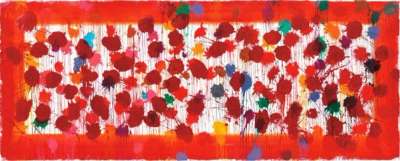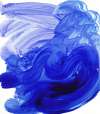As
Time Goes By
Howard Hodgkin’s As Time Goes By comprises two 2009 etchings. Released in editions of 7, they are impressive 2-metre-wide prints, with stipples in vibrant multicolours and thick hand-painted borders in blue or red. Hodgkin produced works inspired by personal memories, often undisclosed; thus, he names the series evocatively, but cryptically.
Howard Hodgkin As Time Goes By For sale
As Time Goes By Value (5 Years)
Sales data across the As Time Goes By series by Howard Hodgkin varies by print. While standout works have sold at auction for up to £55000, other editions in the series remain rare to market or have yet to appear publicly for sale. Of those tracked, average selling prices have ranged from £44291 to £55000, with an annual growth rate of 1.58% across available data. Collectors should note the discrepancy in performance between more visible and lesser-seen editions when considering value potential in this series.
As Time Goes By Market value
Auction Results
| Artwork | Auction Date | Auction House | Return to Seller | Hammer Price | Buyer Paid |
|---|---|---|---|---|---|
As Time Goes By (red) Howard Hodgkin Signed Print | 22 Jan 2020 | Phillips London | £34,000 | £40,000 | £60,000 |
As Time Goes By (blue) Howard Hodgkin Signed Print | 25 Oct 2019 | Phillips New York | £38,250 | £45,000 | £60,000 |
Sell Your Art
with Us
with Us
Join Our Network of Collectors. Buy, Sell and Track Demand
Meaning & Analysis
Sir Howard Hodgkin was one of the most prominent English painters and printmakers of the 20th century due to the expressive nature of his work. As Time Goes By is composed of two works, As Time Goes By (blue) and As Time Goes By (red). This series is testament to Hodgkin’s skilful mastering of print, which he engaged with perhaps more than any artist of his generation.
While their vast size and colourfulness might seem overwhelming, Hodgkin’s works demand closeness to appreciate their full complexity. Each print required five layers of paint, and the blue and red hues framing the prints were entirely hand-painted on paper, whilst the vivid dots of colour were printed from etched plates. Combining these processes created an intricate but smooth combination of painterly brushstrokes, the artist’s mark, and mechanical reproductions. To further add to this expressionist quality, Hodgkin resorted to carborundum printmaking - a technique that the artist notoriously learned from Jack Shirreff at 107 Workshop. The use of this technique added a tactile and painterly quality to the works due to the little embossings which are visible on close inspection.
Even with their original meaning hidden, these works continue to fascinate any collector of modern art, inviting the audience to project their own feelings and thoughts onto the surface of the works. After all, Hodgkin is famously remembered for saying “I am happy for people to talk about my pictures, but I wish devoutly that I was not expected to talk about them myself…If people felt enthusiastic, I’d like them to talk about their enthusiasm—you know, the effect on them rather than about the pictures. Surely for all artists that’s the most useful thing that can happen.”









